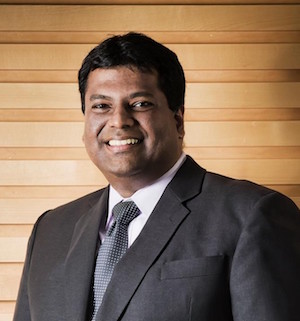If – as the saying goes – insurance is sold not bought, then there’s a lot that insurers can learn from retailing.
That is particularly so now that Asia is in the midst of profound transformation, from evolving demographics to growing economies. And this changing landscape is also changing the conversation, with many of us asking how we can access these new and emerging markets.
At the epicentre of change is the digital revolution, transforming consumer buying habits, and expectations. Retailers in Asia have been blazing the trail here, navigating this new roadmap impressively. They’ve created world-class customer journeys and sophisticated logistics, keeping pace with customers who are increasingly demanding, impatient and promiscuous.
Not surprisingly, our insurance customers are starting to extrapolate the customer experience they’ve had in retail, and (quite rightly) are applying the same standards to us. As far as our customers are concerned, there’s little delineation between buying a pair of shoes and buying a week’s travel insurance. This means it is now our industry’s turn to change – and things are changing fast. We’re seeing the expansion of new channels in both life and general insurance, including direct-to-consumer products and new retail affiliates.
So as the insurance industry seeks to make its products more ‘buyable’, here are five lessons we can learn from retail:
Customisation
Customers are looking for insurance that’s bespoke to their needs so agile brands are creating channels that can deliver this. The obvious choice is digital, incorporating insurtech solutions such as smart data and AI. Likewise, the unique functionality of smartphones can create an ‘always on’ modus operandi that can radically change the interactions we have with our customers.
The human touch
That said, traditional channels still offer benefits that digital cannot. Chat bots, for example, may be useful for FAQ-style services, as many retailers have seen the human touch remains a valuable resource. In fact, that can be a differentiator for insurers. We’re one of the few industries that people actively engage with during their most challenging moments and one of the few that can help make things better. So our people channels (agents and bancassurance partners) are critical in building trust, and relationships. Going forward, future-ready insurers will need to reposition the role of the agent as much more than just selling and servicing. Today’s customers want professional insights. That means being able to ask the right questions to determine the right path.
Using digital to enhance customer experience
While the human touch is important, retail has also shown that we cannot miss the wider opportunities in digital. Because although it would be easy to view digital (and mobile) as just another sales channel, these have huge potential to enrich customer experience. Since data is the lifeblood of today’s customer-led paradigm, we are also seeing the incorporation of customer insights in many new and exciting ways. For retail this has meant a transformation of the entire supply chain, one in which customers themselves have created the blueprint, with clear expectations of a seamless shopping experience. Likewise, in insurance we can use digital platforms in all kinds of ways: to enable customers to make a claim, track a claim, pay their premiums – all of it quickly, easily, seamlessly. That way, when the time comes to renew (or up-sell), a relationship is already established.
Going omnichannel
Retail has shown that the omnichannel approach is the most sustainable strategy – not least because customers want to be given the choice of how and when they engage with brands. So it is more important than ever for us to make insurance easier to buy, easier to claim, and easier to understand. That way it becomes easier to capture these new opportunities – across a range of channels. Online and offline channels can work together. Take the examples of machine learning and automation. These can streamline some of the more mundane jobs for agents, such as data entry, meaning they can spend more time doing the kind of work that technology can’t do, such as building relationships. Meanwhile new affiliate partnerships – including retail affiliates – can help us tap into new markets in a way that neither agents nor DTC can. Everything can work in synergy.
Consistency
Within all of this, consistency is an imperative. Similar to the big players in retail, we need to ensure that all our channels are integrated rather than treating each as working in silo. This means the value proposition must be the same, no matter which channel is being used, and that brand behaviour and promises are kept across the entire customer life-cycle. For example, some customers may seek initial advice via their broker, with the latter effectively ‘prepping’ them. Then, when the customer re-engages via a DTC model, this process can reinforce what they’ve already learned and been told by the agent.
Omnichannel strategies will take time
In the world of insurance, it will most likely be some time before omnichannel strategies can yield concrete results. After all, the heritage infrastructure of our industry, built over decades, could never have anticipated the need to support multiple channels. But five years ago, retailers were facing the exact same challenges and now the industry thrives, leading the way in customer-experience journeys as well as exciting new distribution channels.

For me, working at a fast-growing insurance company in one of the most exciting markets in the world, I envision a future where insurance companies work with retail partners and further integrate insurance into products that are ‘bought’. In this regard we can disrupt both our industries with thoughtful and transformative collaborations, offering insurance as part of a bundle or add-on. We can then borrow from each other’s brand affinity and plug into all kinds of channels and ideas. From our perspective, this future is already in the making, so I’m excited to see how our industries will progress, and start working together more closely.






